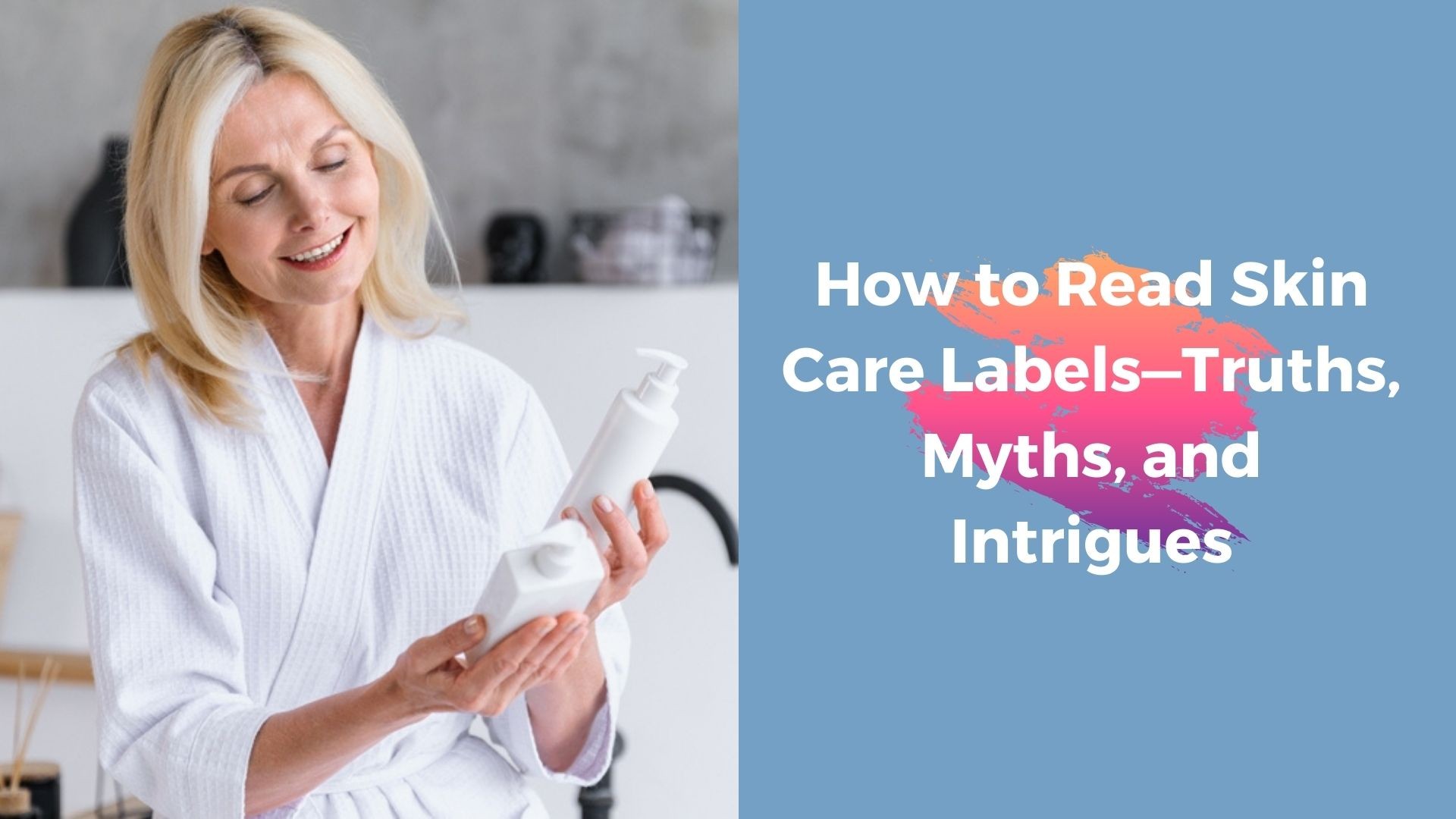

We've all been there, standing bewildered in the skincare aisle, surrounded by a sea of serums, lotions, and potions, each promising everything from a reduction in wrinkles to the ability to re-plump and hydrate dry, dull, and lackluster skin.
But is any of that really possible?
Sure, we all know the descriptions may exaggerate, but is any of it true?
How powerful can skincare products really be? What can they truly accomplish?
Before you empty your wallet on the latest "miracle" cream, let's take a deep dive into the fascinating world of skincare labels, separating fact from fiction and deciphering that cryptic thing known as an ingredient list.
(Spoiler alert: there truly are ingredients scientifically proven to help heal, hydrate, and improve the appearance of our skin! Unfortunately, there are also a lot of ingredients that don’t do anything at all.)
Think of your skin as your body's armor—the first line of defense against environmental aggressors like pollution and UV rays.
A good skincare routine goes beyond just making you look good (although that's a pretty awesome perk!).
A good skincare routine helps maintain a healthy skin barrier, which keeps moisture in and irritants out.
And, even if a product doesn't magically erase wrinkles overnight, there's compelling research suggesting that certain ingredients can help minimize lines, giving you smoother, more radiant skin.
Here’s another interesting fact: the act of caring for your skin can actually boost your mood. One study found that applying facial skincare improved self-image and well-being in older women residing in nursing homes. So, the confidence boost you get from a glowing complexion is a real thing!
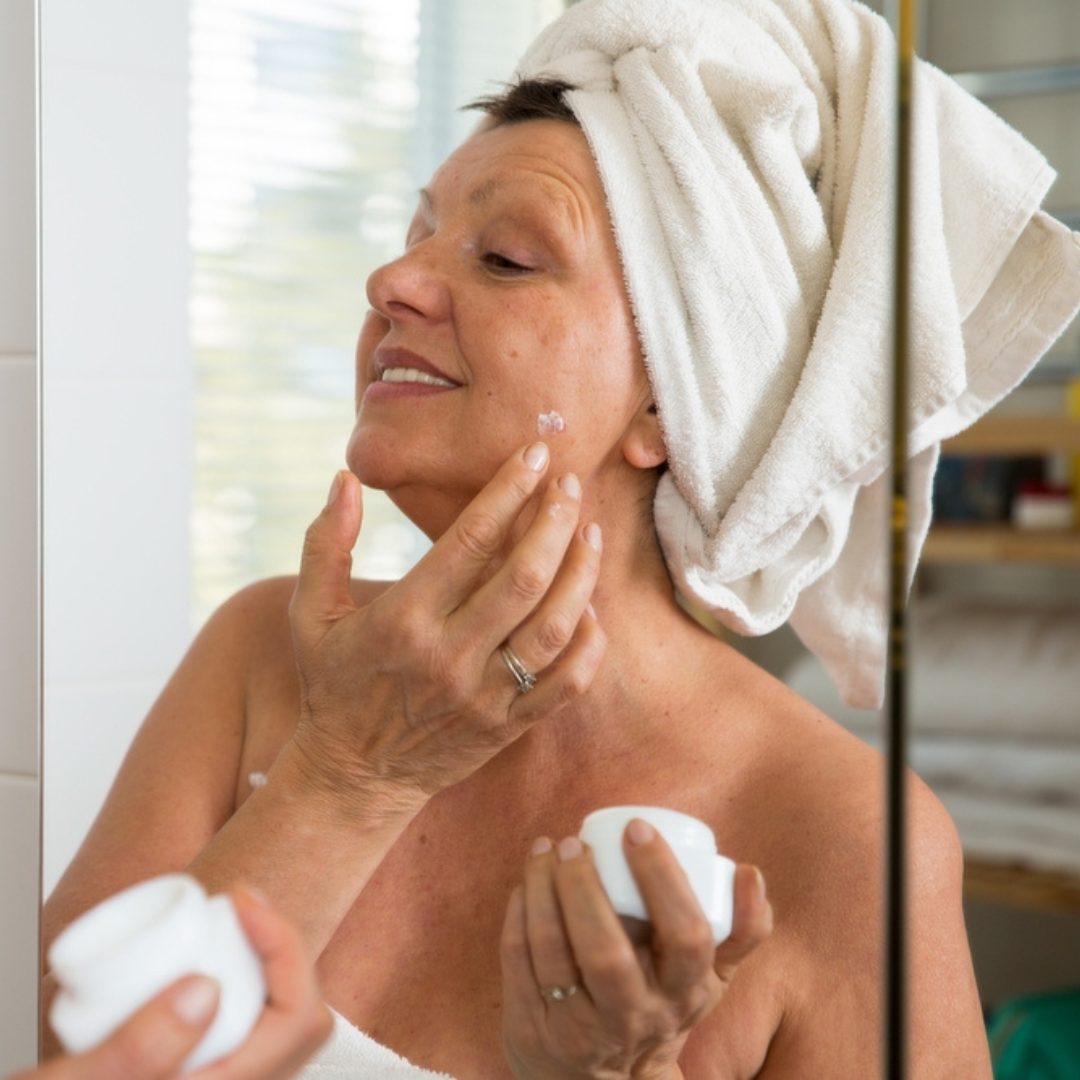
There's such a thing as too much of a good thing.
The 12-step Korean skincare routine might look amazing on social media, but layering too many products can overload your skin, disrupting its natural balance and leading to irritation.
Research suggests that focusing on a few key actives (i.e. active ingredients) and maintaining a healthy skin barrier is more effective than bombarding your face with a product arsenal.
So there you have it—no need to spend a gazillion dollars on different products and waste half an hour every day applying them!

What goes into making a good skincare product? What are the building stones you need, whether it’s a body lotion or serum?
The Base: This is the foundation of your product, like a lotion or gel. It can be lightweight and water-based for oily skin, or richer and creamier for dry skin.
Hydrators: Glycerin is a hydrator. It works by binding to water molecules and drawing them into the skin, plumping it up and improving elasticity.
Humectants: Honey and glucose are humectants. Unlike hydrators, humectants don't directly add water to the skin. Instead, they attract moisture from the air or deeper layers of the skin to the surface. This can be beneficial, but if the air is dry, humectants can actually pull moisture out of the skin, making it drier.
Emollients: Shea butter and ceramides are common emollients. They act like a soothing balm, softening the surface of your skin and creating a protective layer to lock in all that good hydration.
Stabilizers: These unsung heroes keep your products fresh and effective for longer. They prevent the fancy ingredients from separating or spoiling.
Chelating Agents: Ever heard of metal ions? Yuck! These tiny buggers can sneak into skincare products and cause problems. Chelating agents act like tiny magnets, grabbing these metal ions and whisking them away before they can wreak havoc.
Preservatives: These are essential for keeping your products safe to use for longer. They fight off bacteria and mold growth.
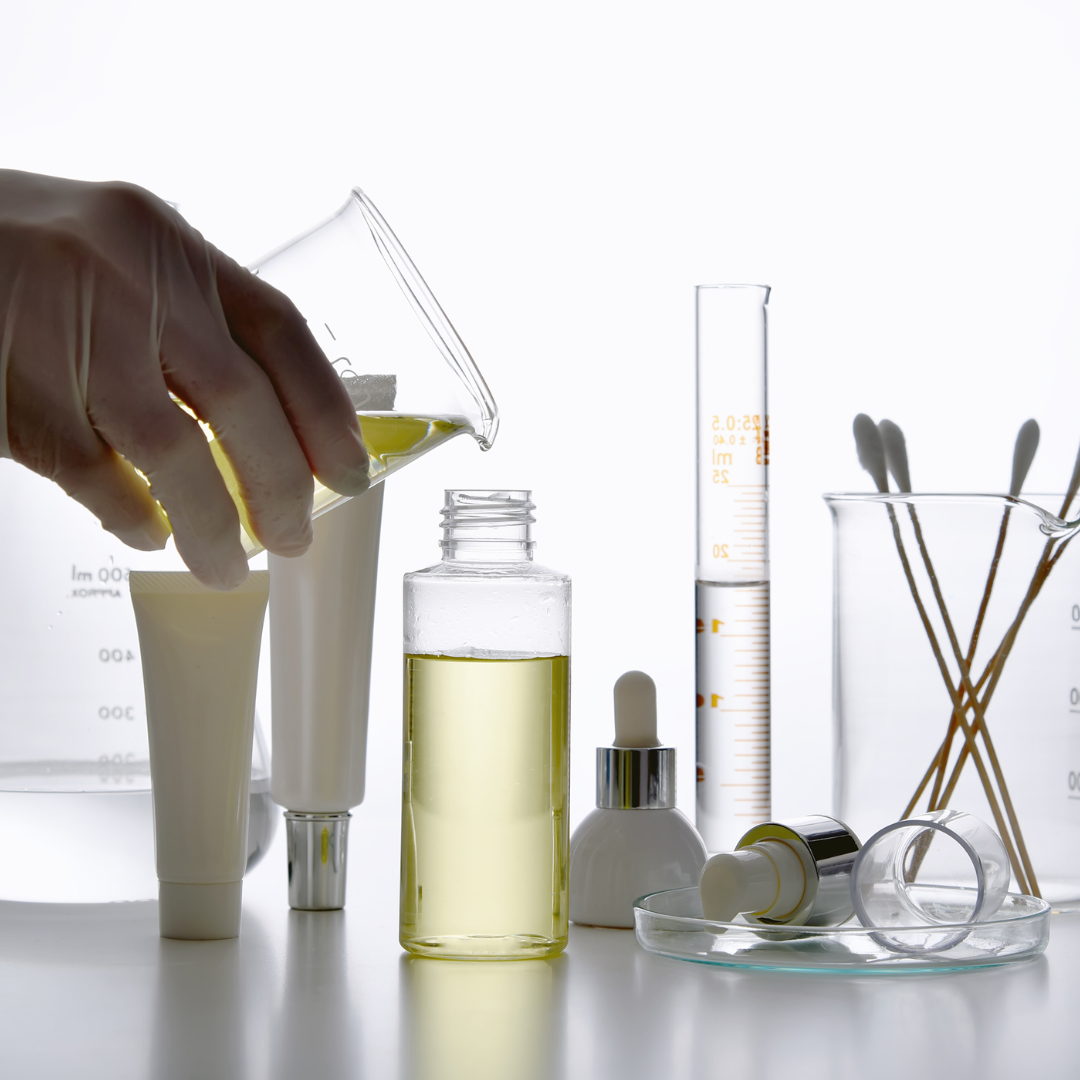
But what about so-called “natural products?” Aren’t they preservative free?
Well, that’s an interesting point.
In natural products, natural ingredients that are antibacterial and antifungal might have been added (such as tea tree oil).
But there are exceptions.
Plain shea butter, coconut oil, or regular Vaseline contain no preservatives, though as oils/butters they preserve themselves. However, they don’t have anything in them to kill off bacteria (but coconut oil and shea butter have antibacterial properties).
For those kinds of products you have got to wash your hands before use (or use a clean spatula or spoon to get them out of the tub before applying them).
Actually, you should always clean your hands when applying skincare products, but with something like Vaseline, it’s extra important!
As you now know, using skincare products can work magic for your skin and there truly are “superstar” ingredients.
But…and this is a big BUT…the beauty industry is notorious for buzzwords and hyped ingredients. Don't fall victim to the marketing magic!
Here's a reality check on some common claims:

Myth
Coconut oil is a miracle cure for everything!
Reality
While coconut oil has some moisturizing benefits, it can be comedogenic (meaning it clogs pores) for some skin types.

Myth
Activated charcoal draws out impurities like a magnet!
Reality
While charcoal may absorb some surface impurities, it can be overly drying and disrupt your skin barrier.

Myth
Retinol is too harsh for sensitive skin.
Reality
Retinol is a powerful anti-aging ingredient, but it can cause irritation initially. However, there are gentler forms available (such as retinol mixed with squalene), and proper application can minimize side effects.

Myth
Natural ingredients are always better.
Reality
Not all natural ingredients are created equal. Some can be irritating, while some synthetic ingredients are highly effective and safe for the skin.

Myth
Hyaluronic acid plumps wrinkles instantly!
Reality
Hyaluronic acid is a humectant (as well as a hydrator), attracting and retaining moisture in the skin. This can provide a plumping effect, but it won't fill wrinkles permanently—but as long as your skin stays plump, your wrinkles will be less defined.

Myth
Petroleum jelly is really bad for you.
Reality
Properly refined (at least three times) petroleum jelly is actually great for locking in moisture, especially for people with really dry skin, or people who live in dry or cold climates. It can also help heal minor cuts. On the flip side, it can clog your pores and you should never get bacteria in it and then use it (wash your hands before use).

Myth
Coconut oil is a miracle cure for everything!
Reality
While coconut oil has some moisturizing benefits, it can be comedogenic (meaning it clogs pores) for some skin types.

Myth
Activated charcoal draws out impurities like a magnet!
Reality
While charcoal may absorb some surface impurities, it can be overly drying and disrupt your skin barrier.

Myth
Retinol is too harsh for sensitive skin.
Reality
Retinol is a powerful anti-aging ingredient, but it can cause irritation initially. However, there are gentler forms available (such as retinol mixed with squalene), and proper application can minimize side effects.

Myth
Natural ingredients are always better.
Reality
Not all natural ingredients are created equal. Some can be irritating, while some synthetic ingredients are highly effective and safe for the skin.

Myth
Hyaluronic acid plumps wrinkles instantly!
Reality
Hyaluronic acid is a humectant (as well as a hydrator), attracting and retaining moisture in the skin. This can provide a plumping effect, but it won't fill wrinkles permanently—but as long as your skin stays plump, your wrinkles will be less defined.

Myth
Petroleum jelly is really bad for you.
Reality
Properly refined (at least three times) petroleum jelly is actually great for locking in moisture, especially for people with really dry skin, or people who live in dry or cold climates. It can also help heal minor cuts. On the flip side, it can clog your pores and you should never get bacteria in it and then use it (wash your hands before use).
While some ingredients have been touted as super awesome, others have been touted as super bad.
For example, putting large amounts of parabens (an effective preservative that keeps “bad” bacteria and mold at bay) on your skin isn’t recommended because it might disrupt the endocrine system (and for that matter, so might lavender and tea tree essential oils).
However, using it in a mascara, well, it won’t do anything to harm you. The amount in the mascara is small, and as you use it on your lashes, not much of the product comes in contact with your skin.
Think of it like sugar—half a teaspoon a day isn’t going to disrupt your body. Half a cup a day, on the other hand, likely will.
Unfortunately, once an ingredient is labeled as “bad” people might fail to notice its good qualities.
Compare it to cinnamon. If you’re into healthy foods (like I am!), you might have heard cinnamon is good for you. It can help lower blood sugar, for example and comes with a plethora of other benefits. But both cassia and ceylon cinnamon contain coumarin which, in large doses, is toxic. Ceylon contains less coumarin, so if you eat a lot of cinnamon (maximum one teaspoon a day), then you should stick to ceylon.
And therein lies the other problem—once an ingredient is touted as “good” people over use it. As in the case with tea tree and lavender oil. Both ingredients come with some amazing benefits, but in larger quantities and/or too frequent use, they can disrupt your endocrine system.
This is why you have to truly research an ingredient before you decide whether it’s “good” or “bad.”
Don’t skip this step! Because what you put on your skin is often absorbed by the skin (the molecules that are small enough to sink in). Your body “eats” skincare products!
What’s more, research suggests that putting a cream on once might mean you can detect traces of various substances from that cream for several weeks. (And yes, the study participants did shower during those weeks!)
All that said, here are some ingredients you should use with care, or only in smaller amounts, such as parabens, tea tree, and lavender oil:
Fragrance/Parfum: This is a catch-all term for a blend of synthetic chemicals that can irritate the skin, especially for those with sensitive skin. It's best to opt for fragrance-free products if you have any concerns.
Sulfates (SLS/SLES): These are cleansing agents that create a lathering effect. While effective at removing dirt and oil, they can be overly stripping and drying for some skin types.
Alcohol (Denat Alcohol): Similar to sulfates, some alcohols can be drying and irritating. However, not all alcohols are created equal. Fatty alcohols like Cetearyl Alcohol are often used as thickeners and emollients and shouldn't be a cause for concern.


Physical Exfoliants (Walnut Shells, Apricot Scrubs): These can be too harsh and cause microtears on the skin. Chemical exfoliants with AHAs or BHAs are generally gentler alternatives.
Oxybenzone and Octinoxate: These are common sunscreen ingredients that have been linked to coral reef bleaching. There are also some concerns about their potential endocrine disruption, though research is ongoing.
Hydroquinone: This is a potent skin lightening ingredient that can be very effective, but it can also cause irritation, ochronosis (blue-black discoloration), and sun sensitivity.
Synthetic Dyes: While generally safe, some synthetic dyes can cause allergic reactions in people with sensitive skin.
Remember what I said about sugar? When used in the right amounts and diluted properly, some of these ingredients won’t harm you. You just have to ensure you don’t use them too often.

BHAs (Beta Hydroxy Acids): Cleanse pores, target blackheads, and help with acne-prone skin. Salicylic acid is the most common BHA…but note that it can cause irritation.
Ceramides: Essential for healthy skin barrier function, helping retain moisture and prevent irritation.
Sunscreen Ingredients (Zinc Oxide, Titanium Dioxide): Protect your skin from harmful UV rays, the leading cause of premature aging and skin cancer.
Herbal Extracts and Essential Oils: Some botanicals are excellent in skincare, doing anything and everything from fighting off free radicals, to fighting off inflammation and bacteria. Just remember that even if they are good for you, some people still experience allergic reactions (though it’s very rare with some botanicals and more common with others).
These ingredients are good…in the right amounts.
Retinol: This powerhouse tackles wrinkles, sun damage, and uneven skin tone.
Vitamin C: An antioxidant that brightens skin and protects against free radical damage.
Hyaluronic Acid: This humectant magnet attracts and binds moisture to your skin, plumping your skin and thereby minimizing the visibility of wrinkles and fine lines.
Niacinamide: Reduces redness, minimizes pores, and improves skin barrier function. This versatile ingredient is great for a variety of skin concerns.
Peptides: Signal the skin to produce collagen and elastin, improving firmness and elasticity.
AHAs (Alpha Hydroxy Acids): Exfoliate dead skin cells, promoting smoother and brighter skin texture. Common AHAs include glycolic acid (oilier skin), lactic acid (more sensitive skin), and mandelic acid (acne-prone skin). Note that only small amounts should be used, or the effects are damaging, not good.

We’ve already looked at the building blocks needed for great skincare products, as well as some common ingredients recognized as being beneficial…and others to avoid, at least in larger quantities.
Now, let’s look at PrimeEyes Hydrate to break down what a good skincare product might look like…and help you see how other products compare!


Hydration Powerhouses:
Aqua (Water): The base ingredient, providing hydration.
Glycerin: A humectant that draws moisture from the air and deeper skin layers, keeping your skin hydrated.
Butylene Glycol: Another humectant that attracts and retains moisture in the skin.
Sodium Hyaluronate: A form of hyaluronic acid, a powerful humectant that can hold up to 1,000 times its weight in water, plumping and hydrating the skin.
Nourishing Emollients:
Squalane: A lightweight emollient that mimics natural skin oils, softening and smoothing the skin.
Jojoba Seed Oil: A natural oil similar to sebum (skin's oil), offering moisture and creating a protective barrier.
Cetyl Ethylhexanoate: An emollient that helps soften and smooth the skin, and can also aid in moisture retention.
Cetearyl Alcohol: A fatty alcohol that acts as an emollient, softening the skin and creating a protective barrier. However, it can be drying for some skin types, so watch for any irritation.


Moisture Locking Agents:
Trehalose: A sugar molecule that helps protect skin cells from dehydration.
Glyceryl Stearate & Glyceryl Glucoside: Emollients with additional benefits of helping retain moisture in the skin.
Peg-100 Stearate: A thickener and emollient that can also help prevent moisture loss.
Antioxidant Powerhouses:
Tocopheryl Acetate (Vitamin E): An antioxidant that protects the skin from free radical damage caused by environmental factors like UV rays and pollution.
Ascorbic Acid Polypeptide (Vitamin C): A stabilized form of Vitamin C that brightens skin tone and protects against environmental damage.
Tocopherol: Another form of Vitamin E, offering antioxidant protection.
Peptide Magic:
These ingredients are all peptides, which are short chains of amino acids that can signal the skin to produce more collagen and improve skin texture and elasticity. The specific effects may vary depending on the peptide:
Acetyl Hexapeptide-8 (Argireline): This peptide may help reduce the appearance of expression lines by relaxing facial muscles.
Acetyl Octapeptide-3: Similar to Argireline, this peptide may also target expression lines.
Acetyl Heptapeptide-4: Less studied compared to others, but may have wrinkle-reducing properties.
Palmitoyl Tripeptide-5: May stimulate collagen production and improve skin firmness.
Acetyl Tetrapeptide-2: Another peptide with potential benefits for reducing wrinkles and improving skin elasticity.

Botanical Extracts:
These offer various benefits depending on the extract:
Witch Hazel Extract: An astringent that can tighten pores and reduce inflammation, but may be drying for some skin types.
Sunflower Seed Oil: Rich in Vitamin E and antioxidants, offering nourishing and protective benefits.
Avocado Oil: A moisturizing and nourishing oil that can benefit dry or sensitive skin.
Aloe Barbadensis Leaf Extract: A soothing and hydrating extract that can calm irritation and redness.
Saffron Extract: May have anti-inflammatory and antioxidant properties, although research is limited.
Preservatives:
These ingredients help prevent bacteria and mold growth, extending the shelf life of the product:
Propylene Glycol: A common preservative that can also act as a humectant.
Hydroxyacetophenone: A preservative that may also have some antioxidant benefits.
Phenoxyethanol: A widely used preservative.
Chelating Agents:
Disodium Edta: This ingredient helps bind metal ions that can contaminate products and affect their quality.
Other Ingredients:
Arginine: An amino acid that may play a role in wound healing, but research on topical application is limited.
Propanediol: A solvent derived from corn sugar, often used in skincare products.
Isohexadecane: An emollient that helps soften and smooth the skin.
Laureth-7: A cleanser and surfactant that helps remove dirt and oil.
Caprylhydroxamic Acid: A preservative booster that enhances the effectiveness of other preservatives.

Glucose: A humectant that can attract moisture to the skin.
1,2-Hexanediol & Ethylhexylglycerin: Solvents and preservatives that may also have some antimicrobial properties.
Ppg-5-Ceteth-20: A thickener and emulsifier that helps combine water-based and oil-based ingredients in the product, creating a smooth and stable consistency.
As you can see, PrimeEyes Hydrate contains a lot of active ingredients. We’ve gone all out researching what will truly help hydrate the area around your eyes!
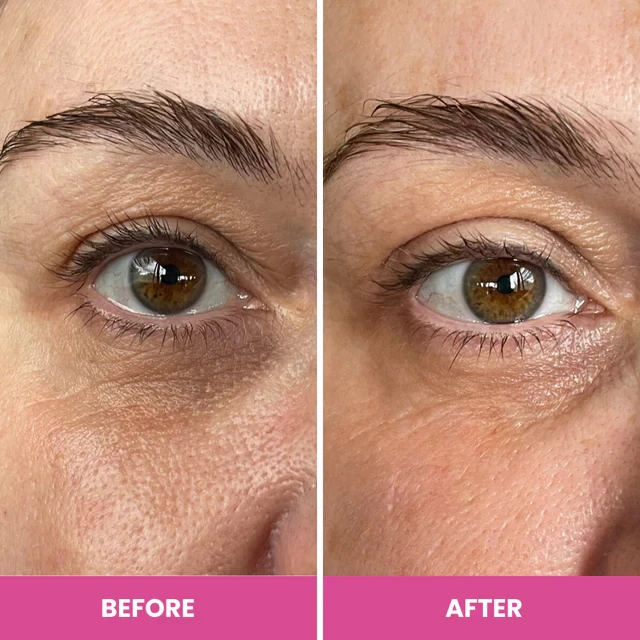
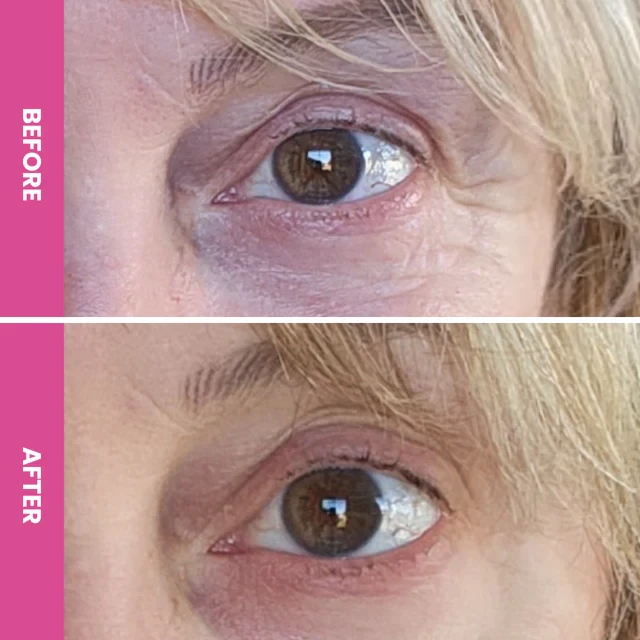
Plus PrimeEyes Hydrate has been developed for mature skin. When we’re younger we have more collagen (and therefore, less wrinkles), and our skin heals easier and is usually less dry.
With age, our skin becomes more sensitive and its ability to heal isn’t as powerful, so harsh ingredients aren’t an option.
In short, the ingredients we need for our skin when we’re twenty and the ingredients we need when we’re sixty aren’t necessarily the same ones.
The world of skincare can be a confusing one, but with a little knowledge, you can learn enough to spot harmful ingredients and avoid marketing hype. Stick to the science and you’ll be fine.
Plus, if you choose trusted brands, your job becomes a lot easier as they do the research for you. Still, always read the label.
